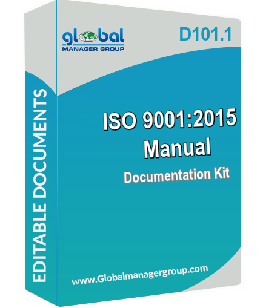ISO 9001 Audit plays a critical role in self-check mechanisms. The last step for your business to become certified to ISO 9001 is an external audit. Your quality management system (QMS) will be evaluated by the auditor to make sure it satisfies ISO 9001 criteria. Although audits may be intimidating, your business should be recommended for certification if you are prepared and know what to expect. To help you prepare, we examine the primary processes of an external audit in this post.
Positive Approaches to ISO 9001 External Audit
ISO 9001 external audit is sometimes stressed. On the other side preparing the audit even if you don’t achieve ISO 9001 certification can give valuable data. Enhanced quality management and more efficiency are typically the outcomes of the process. Thus, even in the unlikely event that you are not accredited, your business will have more profitable and effective processes. These will help you get ready for the upcoming audit.
When is there an ISO 9001 External Audit?
After you’ve finished an internal audit, you should plan an external ISO 9001 audit.
A minimum of two to three months’ worth of records and documentation from your ISO 9001 procedures are required. The internal audit will serve as a test run to identify any issues or violations with your quality control system.
Who will Conduct the ISO 9001 External Audit?
The external ISO 9001 audit is conducted by the auditor team or third party. The auditor assigned to you by an ISO 9001 registered, which is known as a certification Body (CB). After the third-party auditor has concluded the audit and authorized your certification, the registrar—an independent organization—will issue the ISO 9001 certificate.
What are the Stages of Third-Party Audit?
Stage 1: First, the document or readiness review phase of the audit. You can tell at this step if you’re prepared for stage 2. Your QMS documentation and the pertinent policies that enable the system’s operation are the main subjects of the audit. The information that the auditor will require pertains to your Quality Management System (QMS) processes, methods, equipment, internal audit status, and the sites that are under audit.
The auditor will assess if you’re prepared for stage 2 of the audit based on all the examined data and supporting documentation.
Stage 2: Stage 2 can be completed remotely; however, it is typically done in person. Stage 2 is divided into the 3 parts.
Opening Meeting: In this stage During the first meeting, the auditor will go over the audit’s procedure and expectations. To let you know how long the audit will take, he or she will often give you a schedule. Depending on the size of your business, the audit may take up to a week.
Thorough Assessment: The majority of the audit consists of a thorough evaluation. The auditor will review your policies and processes, review your documents, gauge the success of your QMS, and appraise your internal audits. We’ll also assess the success of your main performance objectives and targets, as well as your corrective and preventative measures (CAPA).
Meeting Conclusion and Report: The auditor will provide you with input during the closing meeting, including a rundown of any non-compliances they found. Usually, before obtaining ISO 9001 accreditation, he or she will give a report outlining these issues and outlining the necessary remedial steps.
What Should Do if ISO 9001 Audit Fail?
If an auditor doesn’t suggest your company for ISO 9001 certification non-compliance will have been identified during the ISO audit. Before you can think about reapplying, you must take the time to rectify these non-conformances. It is advisable to carry out one or more internal audits following the implementation of these modifications. After doing this, you can submit a new certification application and request an additional external ISO 9001 audit.
For What Length of Time is ISO 9001 Certification Valid?
To keep ISO 9001 certification current, an external audit needs to be completed every three years. Audits for “surveillance” may also be performed on a regular basis. These are usually completed once a year.



